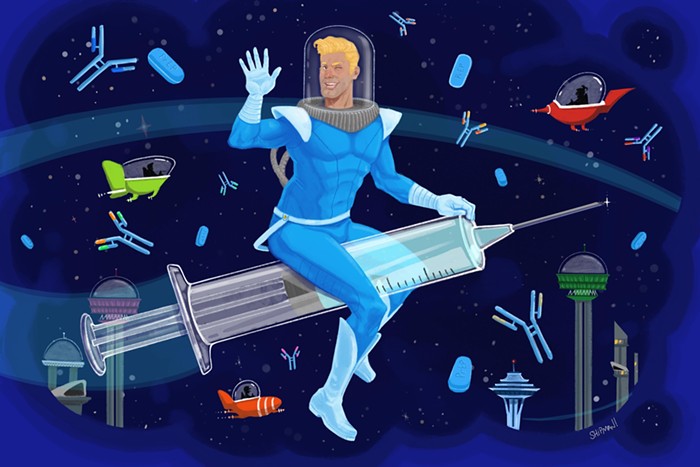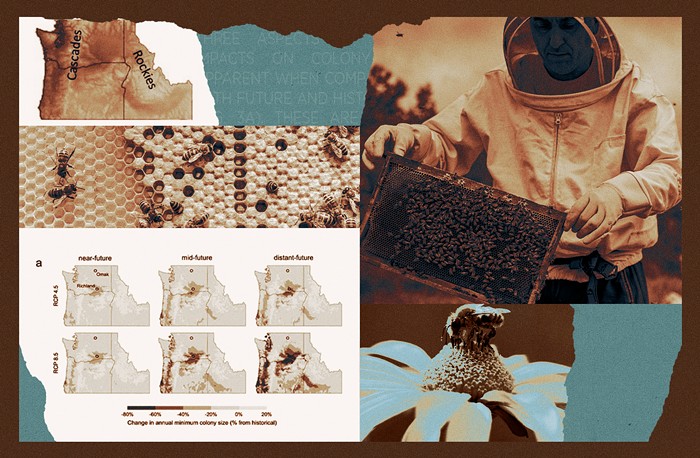At the end of August and the beginning of the present month, we had a good taste of the end of summer (and its heat, which now does nothing but break records) and the arrival of fall. The words of Seattle Weather Blog: It was "cool, cloudy & showery weather." Also, if you have not noticed, the first light of the day presently appears around 6:30 am. Only two months ago it was around 5:30 am. And if you are an insomniac like me, the faintest twilight between the end of the night and the beginning of the day was visible at 4:30 am. The really short days are now only around the corner. Night, with its bright but cold stars, will rule the region and the rain will begin falling and falling. And all of these fruit flies, which even today, in early September, appear to be the primary beneficiaries of the human-caused warming of the Pacific Northwest, will torment our kitchens and bars no more.
My imagination always sees fall, the season that's soon to fully replace summer, which animates the worst kinds of insects and desiccates the leaves of grass, as what life might be year-round on one of the rocky planets in TRAPPIST-1's habitable zone.
Discovered in the last year of the previous century, the star is not bright and hot and bothered like the sun. It's cool and small (the size of Jupiter) and steady as she goes. It's a red dwarf that's only 40 light years from us, from the sun, which has been around for 5 billion years and will be gone in 5 billion years. TRAPPIST-1 has been around for 7.5 billion years and will be around for something like ten trillion years from what we experience as now. That's basically forever. TRAPPIST-1's end (if it can even be called that) will happen long, long, long after the universe as we know it has ceased to be; a red dwarf persisting in a darkness that's almost unimaginable; a solitary star weakly illuminating its seven rocky planets, three of which appear to be hospitable. These extraterrestrial bodies are not spread out like the ones in our solar system but are so close to TRAPPIST-1 that they appear in each other's skies bigger than or as big as our moon.
Study finds if an atmosphere on the exoplanet exists, it may be really thin.https://t.co/ycTKcOUjTv
— Astronomy Magazine (@AstronomyMag) August 29, 2023
From the book for BBC's exceptional TV series The Universe:
Cool and slow-burning, [TRAPPIST-1] has a temperature of just 2,238 degrees Celsius compared to our sun’s blistering 5,500 degrees Celsius. But what makes this type of star so dull among its stellar brethren is also what makes it so remarkable. The low luminosity of red dwarf stars like TRAPPIST means that, unlike their earliest stellar ancestors, they have extraordinary longevity, burning slowly for what could be a 12-trillion-year life span, longer than any other type of star in the Universe. That’s a lifespan that will extend thousands of times the age of the current Universe, a star system that will bear witness to the life story of the Universe from childhood to old age.
My body is on Earth, but my soul is definitely on one of the planets circling and very close to TRAPPIST-1. My soul imagines reincarnation (or something like it—we are now, if you haven't noticed, in the region of science fiction, if not outright fantasy) on one of its cool worlds. The days my TRAPPIST soul sees are dim; the nights "as black as the back my neck." Maybe there are no summers in this solar system. Maybe life on this planet could become as old as the near-deathless star. I can only dream. Dream, dream, dream.


















